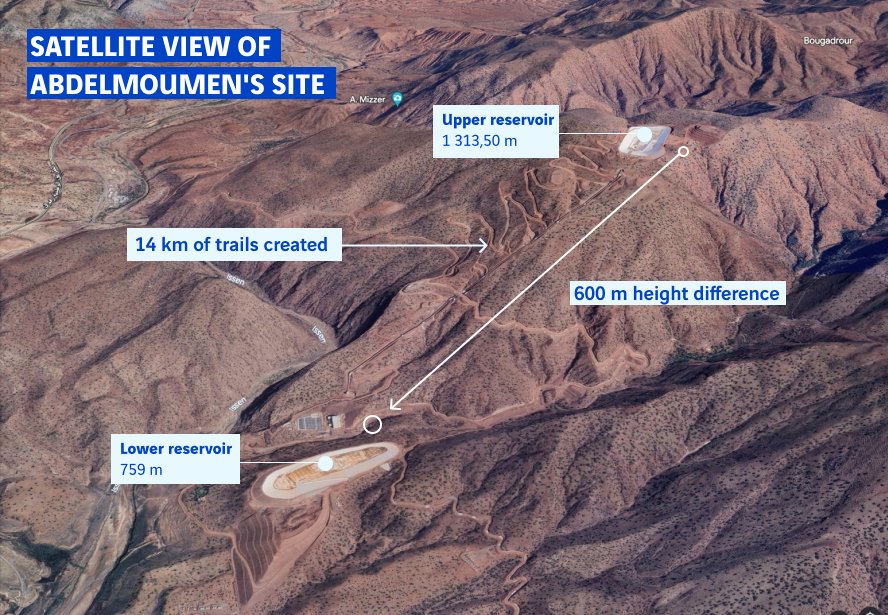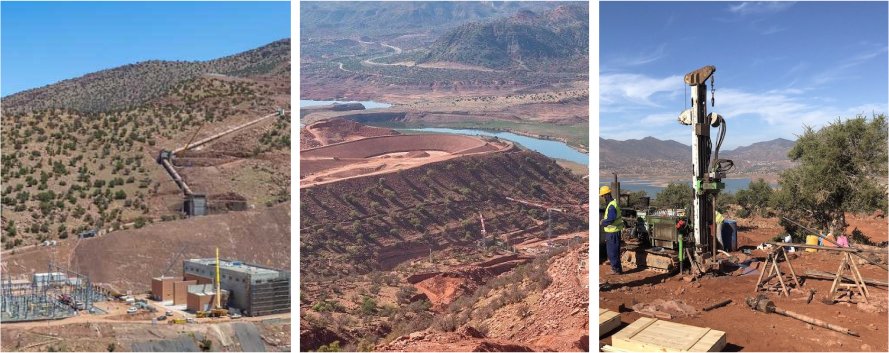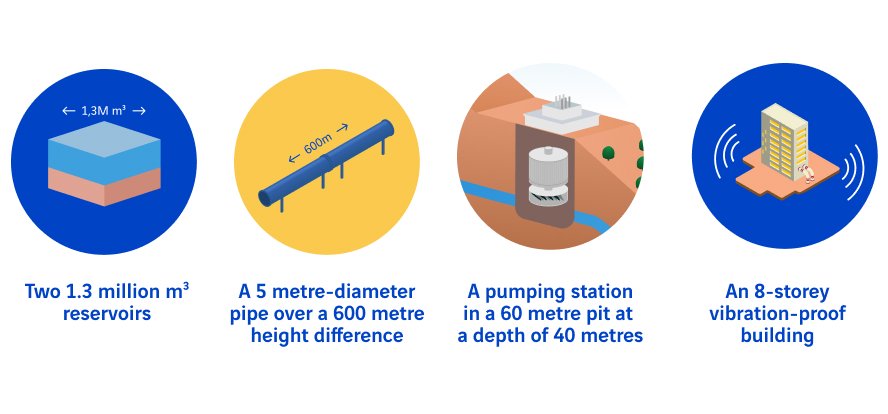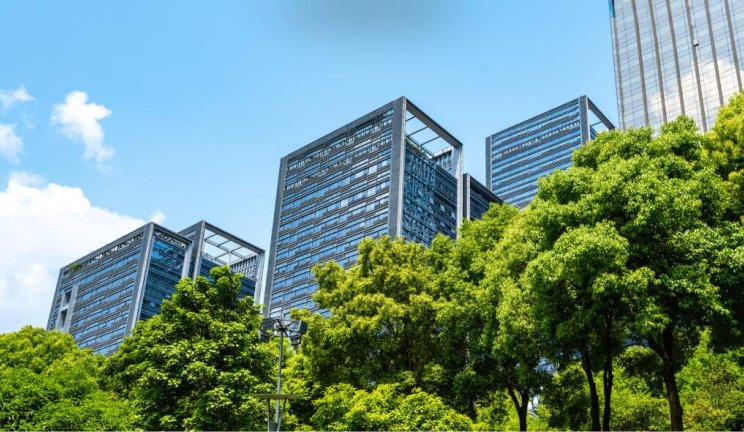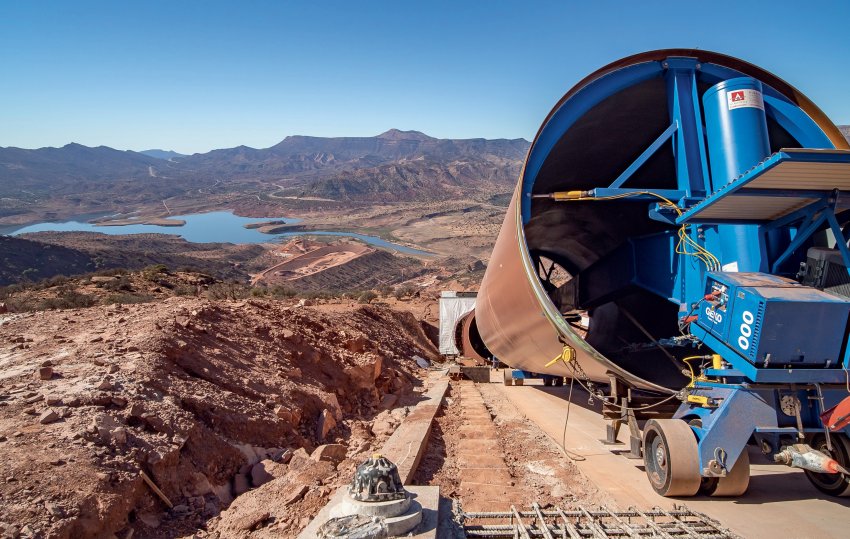
How to store electric energy – PSPs
VINCI Construction built a pumped storage power plant (PSP) in the Anti-Atlas mountain range in Morocco, close to the Abdelmoumen dam and not too far from Agadir.
The PSP will enable Morocco to store electric energy in the form of water while demand is low, then harness it when demand rises – essentially, generating renewable energy on demand.
Renewable energy sources such as solar and wind are crucial to the energy transition underway in the countries that signed the Paris Agreement in 2015, which all aim to achieve carbon neutrality by 2050. Morocco is one of the countries that has set the most ambitious renewable energy targets, aiming to use wind and solar to power half of its electricity mix by 2030.
PSPs, an effective energy storage solution
The problem is that solar and wind are intermittent energy sources as they are impacted by factors such as light winds or heavy cloud cover, for example. Storing excess energy generated when conditions are good – e.g., when the wind is blowing regularly – is therefore highly important, so that the surplus can be pumped back into the network when conditions deteriorate, with minimal wastage.
Numerous energy storage solutions exist, but one of the most effective involves using water to adjust electricity supply and demand. In times of excess output, the energy generated is used to stock water in the upper reservoir. When the plant needs to generate more energy, the water is released and, by way of gravity, flows through a penstock towards the turbine, which also serves as a pump. Here, pressure builds, generating electricity. This is the turbine process, as opposed to the pumping process, where water is pumped upwards. Pumped storage was originally developed in Switzerland at the end of the 19th century.
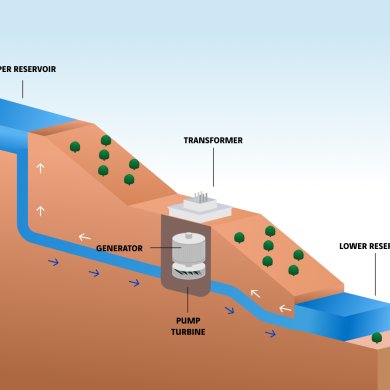
FONCTIONNEMENT D'UNE STATION DE POMPAGE
Lorsqu’il y a surplus de production
On utilise l’énergie produite pour stocker l'eau dans un bassin sur un point haut.
Quand il y a besoin de produire de l’énergie
On fait couler cette eau par gravitation dans une conduite forcée vers une turbine (qui sert également de pompe) pour atteindre une pression élevée, et ainsi produire de l’électricité (on parle alors de "turbinage"*, par opposition au pompage, quand l’eau est remontée).
That mechanism is the principle of PSPs, or pumped storage power plants. For a large output, a PSP requires two reservoirs separated by a significant difference in elevation – at least 100 metres. That elevation can be found at the PSP built by VINCI Construction 70 km from Agadir in Morocco, which will be the crucial for the country to reach its targets for the energy transition.
Abdelmoumen, an ideal site
The Abdelmoumen site was not chosen on a whim; located in a mountainous region, it features the sufficient height needed – 600 m – for the water flow to develop enough power as it passes through the turbines. Meanwhile, the nearby Abdelmoumen dam will supply water to the PSP and offset any evaporation. What’s more, the dam’s electric facilities will harness the energy generated during times of low electricity demand to run the pumps, and reinject it during peak hours.
An immense project on the steep slopes of the Anti-Atlas mountain range
At the start of the project, the site was almost entirely undeveloped; the teams therefore started out by building 20 km of access routes to the various areas of the worksite.
The soil was very hard, but we managed to excavate 5 million cubic meters of earth.
Helder de Sousa
Project Leader at Terelian, VINCI Construction's subsidiary
The immense project involved digging two 1.3 million cubic meters reservoirs, separated by a slope spanning 1,400 m and connected by a partly underground pipe system, with an interior diameter of 5 m, that can resist pressure of over 60 bar. This pipe system will supply water to the two power generation turbines, which each have capacity of 175 MW. The installation and stowage of this penstock pipeline was carried out over 2021.
The pumping and turbine plant is situated between the two reservoirs, in a 60 m long and 50 m wide trench that is buried 40 m below ground. The teams also built the structure around the pumps and turbines – an 8-storey building with 6 below-ground levels, capable of resisting the vibrations of the turbines and the major earthquakes that frequently occur in the region.
All the facilities have been delivered and commissioned in 2023.
Following an international call for tender, the Abdelmoumen PSP project was awarded to a consortium led by VINCI Construction Grands Projets and involving German and Austrian subsidiaries of electromechanical group Andritz Hydro.
Subscribe
Stay tuned : receive our newsletter
Every quarter, discover new articles, exclusive features and experts' views delivered straight to your inbox.
Most viewed
Vous aimerez aussi
Marina Lévy - Companies at the heart of ocean conservation issues
Marina Lévy, oceanographer, research director at the CNRS and ocean advisor to the president of the French National Research…
Building with and for nature
Whether creating barrages, stripping away topsoil, cutting down trees or digging channels, humans have spent thousands of…
Bridging the construction gender gap: paving the way to a career in industry for women in Colombia
In 2025, the Ruta 40 consortium led by VINCI Construction Grands Projets completed work on widening and upgrading the Bogotá…
